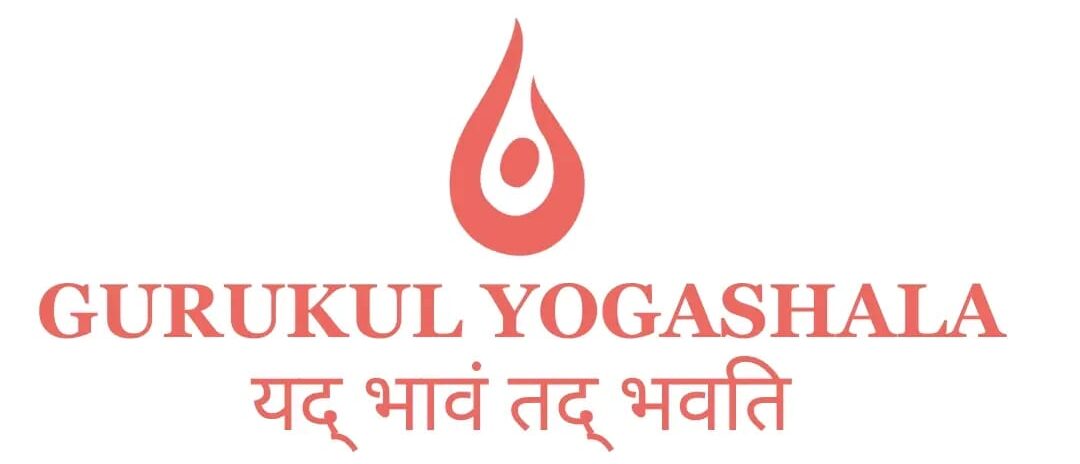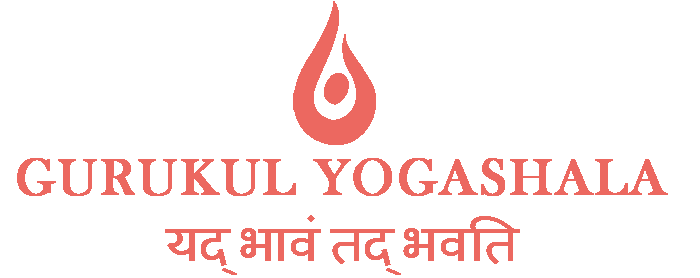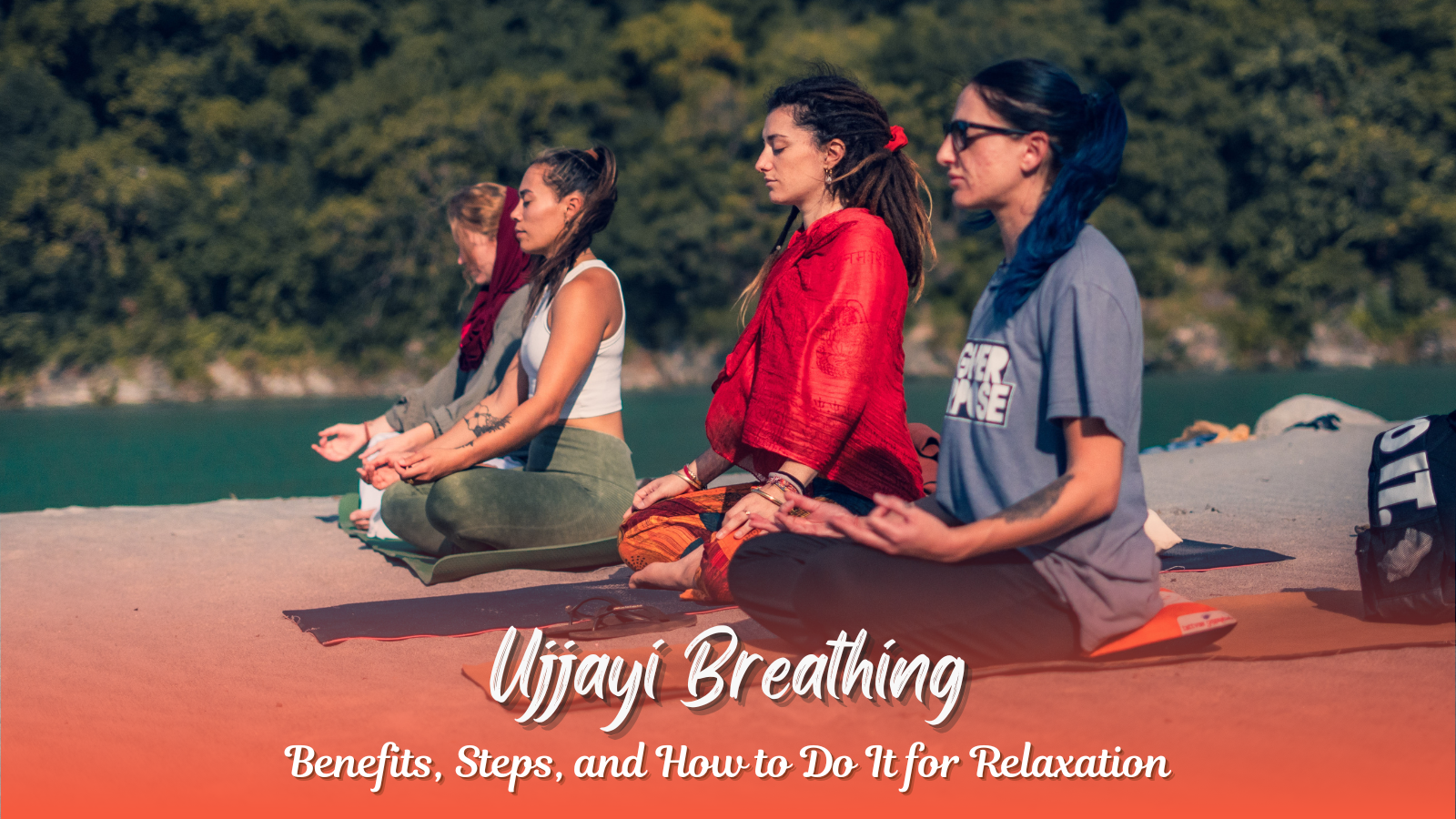Ujjayi Breathing: 5 Benefits, Steps, and How to Do Use It for Relaxation
In yoga practice, Ujjayi Breathing functions as a vital pranayama method because practitioners call it the “Victorious Breath”. During yogic breathing through Ujjayi practice, participants redirect air through their throat to produce a quiet hissing sound.
The practice of Ujjayi breathing stands as an essential fundamental of numerous contemporary yoga styles primarily found within Ashtanga and Vinyasa teachings. Practicing Ujjayi Breathing creates body heat while stabilizing mental clarity along with sharpened focus thus making it an essential practice for the practice room and everyday life. The best yoga school in rishikesh provides great ideas regarding yogic breathing, yoga and breathing techniques, and that is also part of a 200 hour Yoga teacher training course in rishikesh.
The following article presents a complete guide to Ujjayi Breathing which contains educational material about its benefits as well as training details and effective practice recommendations. Subsequently, we examine the scientific basis that supports Ujjayi breathing while clarifying several common queries regarding its usage, and the Yoga teacher training school in Rishikesh can help you to understand all these things.
What Is Ujjayi Breathing and Why Should You Practice It?
Ujjayi Breathing, or “Victorious Breath,” is a controlled breathing technique used in yoga that improves focus, calms the mind, and enhances lung capacity.
During natal Vida Ujjayi generates a subtle throat-restricting noise that people hear while inhaling and exhaling. To understand what is ujjayi, throat constriction measures a hissing noise that is produced whose sound resembles ocean waves and this is very important in maintaining Yogic Breathing.
The Sanskrit word “Ujjayi” holds dual meanings of victory or conquest and “Aham” defines “I”. In Sanskrit “Ujjayi” means “Victorious Breath”. So, it becomes Ujjayi Breathing.
Yoga and breathing techniques, or pranayama definition, are deeply intertwined. In this consequence, the Pranayama definition involves controlling the breath to enhance physical strength and mental well-being. After that, yoga and breathing techniques like Ujjayi, Nadi Shodhana, and Kapalabhati can offer different benefits that help to enhance energy levels while calming the mind.
A yoga teacher training school in Rishikesh can help you to involved in yoga and breathing techniques, and this will help you to get ideas regarding types of yoga breathing, ujjayi pranayama benefits, ujjayi breathing benefits, Ujjayi breath benefits, Ujjayi pranayama steps, Yoga breathing techniques, How to do Ujjayi breathing, what is ujjayi, and benefits of ujjayi pranayama, and more. Our 200 hour yoga teacher training course in rishikesh helps you to manage regular practices and can improve yoga and breathing techniques for individuals with more focus. This will result in reducing stress levels in the body and promoting overall health.
How Does Ujjayi Breathing Work?
As you inhale and exhale through Ujjayi pranayama the back part of your throat feels restricted. This resistance helps to:
- Increasement of internal heat: The controlled throat opening produces mild airflow hindrance that activates internal body heat generation. Historically, this Yogic Breathing technique has shown advantages for muscle warming and joint fluid expansion and enhanced blood circulation and detoxification processes.
- Steady the breath: Forward-based breathing with Ujjayi results in controlled breath regulation that produces decreased nervous system activity. Invaluable support is offered by Ujjayi Breathing in order to navigate difficult yoga postures as well as stress management situations.
- Enhancement of focus: Through its soothing hissing sound Ujjayi Breathing provides mental anchoring that enhances concentration. People get advantages from practicing Ujjayi Breathing for their physical yoga sessions and their non-yoga routine activities like meditation and studying.
Yoga teacher training school in Rishikesh can help you to get all the information regarding the steps and the way of doing Ujjayi pranayama and details about the benefits of Ujjayi pranayama.
How Ujjayi Breathing Helps in Yoga Practice
1. Deepens Your Yoga Flow
Ujjayi breathing synchronizes movement and breath, helping you flow seamlessly in practices like Vinyasa and Ashtanga yoga.
2. Aids in Holding Yoga Poses Longer
By regulating breath and oxygen flow, Ujjayi breathing reduces fatigue, allowing yogis to hold poses for extended durations.
3. Improves Meditation and Pranayama Practices
The rhythmic sound and steady breathing create a meditative state, enhancing focus and mindfulness during meditation sessions.
Ujjayi Breathing Benefits for Mind and Body
Ujjayi Breathing produces benefits embracing a spectrum of physical alongside mental advantages. Some of the key benefits include:
- Improvement of Cardiovascular Health: Using Ujjayi Breath improves your heart rate variability and helps you lower your blood pressure.
- Enhancement of Respiratory Function: Through the Ujjayi Breath technique, humans can enhance both lung volume and their ability to process oxygen.
- Stress Reduction: Through Ujjayi Breath regularization the nervous system lowers its tension along with managing stress.
- Improvement of Focus and Concentration: Through its soft hissing sound Ujjayi Breathing serves to establish mental clarity as well as enhance concentration abilities.
- Increasement of Internal Heat: The Ujjayi Breath technique allows people to produce inner heat whereas the warmth helps warm muscles and joints while boosting circulation alongside detoxification.
How to Do Ujjayi Breathing (Step-by-Step Guide) & Ujjayi Breathing for Beginners
Newcomers to Ujjayi Breathing need a bit of practice before learning to master this technique. Here are some tips for beginners:
- Begin with delicate practice: Practicing Ujjayi Breathing in short sessions is the starting point before stretching your practice time when comfort develops.
- Focusing on the sensation: Maintain your awareness toward the breath sensation when it moves through your throat.
- Try not to force it: Avoid forcing constriction and nature should determine the volume of your breath.
- Daily Practice: A superior control over Ujjayi Breathing can be achieved through a commitment to regular practice. Daily practice sessions of no longer than a few minutes should become your target.
Ujjayi Breathing Technique
- Find a comfortable seated position: Your spine needs to remain straight while you assume an upright position. Club your legs while seated for meditation or relax on a chair or cushion.
- Close your eyes tenderly: Slowly close your eyes to reduce distractions entering your field of vision.
- Start to breathe: Saunter your breath by using your nose only for both inhaling and exhaling deeply.
- Tighten the back of the throat: When you breathe out through your nose produce a soft hissing sound after gently pinching the back of your throat.
- Maintaining the constriction: Hold the consistent throat constriction throughout all parts of your breathing cycle from inhalation through exhalation.
- Continue breathing: Breathe through this mode for multiple minutes.
Tips for mastering Ujjayi Breathing
- Practice with a mirror: Noticing yourself in a mirror can assist you with picturing and refining the choking toward the rear of your throat.
- Stand by listening to the sound: Consider your breath and the sound must be delicate and predictable.
- Practice with a qualified instructor: If conceivable, practice Ujjayi Breathing with a certified yoga educator. They can give customized direction and input.
- Integrate Ujjayi Breathing into your yoga practice: Ujjayi Breathing is frequently integrated into yoga asanas that is poses.
- Please work on during meditation: You can also rehearse Ujjayi Breathing during meditation to give your care and unwind.
The Science Behind Ujjayi Breathing
Ujjayi Breathing significantly affects the parasympathetic nervous system, answerable for the “rest and digest” reaction. Moreover, by slowing down the breath and making a delicate obstruction, Ujjayi Breathing assists with initiating the parasympathetic nervous system, advancing relaxation, and reducing stress.
Ujjayi Breathing also enhances oxygen supply to the brain and different organs of the body and this increased oxygenation helps to improve energy levels, boost cognitive function, and increase overall well-being.
When to Practice Ujjayi Breathing
Ujjayi Breathing can be effortlessly integrated into your day-to-day existence. The following are a couple of ways of rehearsing:
- During your morning routine: Begin your day with a couple of moments of Ujjayi Breathing to quiet the brain and get ready for the day ahead.
- Before meals: Practice Ujjayi Breathing before meals to help process and lessen pressure and that is the major of the benefits of ujjayi pranayama.
- During stressful situations: While feeling restless or overpowered, go to Ujjayi Breathing to quiet the brain and restore balance.
- Before sleep: Practice Ujjayi Breathing before bed to advance unwinding and further develop sleep quality.
FAQS
What is the science behind Ujjayi breathing?
Ujjayi Breathing can activate the parasympathetic nervous system that promotes relaxation and maintains stress levels. Ujjayi breathing benefits in enhancing the activity of cognitive function and manages the brain and other organs strongly along with overall well-being.
How do you breathe the Ujjayi?
To take in Ujjayi, tenderly constrict the back of your throat during both inward breath and exhalation, making a delicate hissing sound. Ujjayi breathing benefits in managing cognitive function while maintaining other organs more stable and stronger.
What is the mudra for Ujjayi?
There is no particular hand gesture or specific mudra to do Ujjayi breathing and a few specialists might find it supportive to tenderly press the tongue against the top of the mouth while practicing. Ujjayi pranayama benefits and these include reducing stress levels of the body and increasing relaxation with the best cognitive activities.
What is the duration of Ujjayi Pranayama?
The length of Ujjayi pranayama can fluctuate contingent on individual requirements and inclinations. Besides, beginners can begin with a couple of moments of training regarding types of yoga breathing and gradually increase the term as they become more comfortable with yoga and breathing techniques.
Conclusion
Ujjayi Breathing is a basic yet strong pranayama procedure that offers various advantages for both physical and emotional well-being. Moreover, by integrating Ujjayi Breathing into your everyday practice, you can encounter diminished stress, further developed focus, and improved by and large prosperity. The best yoga school in rishikesh can help you to get a better understanding of the pranayama definition, ujjayi pranayama benefits, ujjayi breathing benefits, types of yoga breathing, and benefits of ujjayi pranayama.
Make sure, to begin with the delicate practice of types of yoga breathing and progressively increment the length as you become more comfortable. On the concern that you have any worries or questions, talk with a certified yoga educator. Our 200 hour Yoga teacher training course in rishikesh will also help you to find the best way to find yogic breathing, yoga and breathing technique, ujjayi pranayama, and what is ujjayi.
We think our comprehensive guide about Ujjayi pranayama will be helpful for those who are trying to include their daily routine and manage their yoga schedule as per their time. If you have any questions regarding yoga and pranayama, you can contact us at Gururkul Yogashala, and You can also visit our website to better understand about 200 hour yoga teacher training course in rishikesh, a course of Yoga training and teaching for all.


